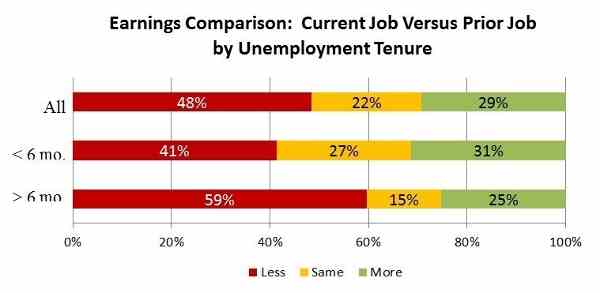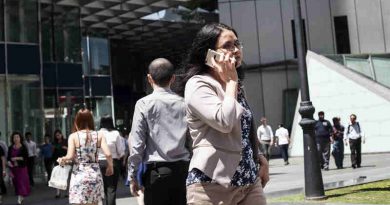Unemployment in the U.S. – Future of Work@50

Despite recent improvements in job creation statistics and unemployment rate in the U.S., half of the people ages 45 to 70 who experienced unemployment during the past five years are not currently working, according to a survey conducted by a nonprofit organization AARP.
Fifty percent of survey respondents reported they were either unemployed or had dropped out of the labor force. Among those who had become reemployed, nearly half said they were earning less than in their previous jobs.
The survey was sponsored by the AARP Public Policy Institute’s Future of Work@50 initiative. A report on the survey results, “The Long Road Back: Struggling to Find Work after Unemployment,” was released Monday at a Washington briefing and panel discussion on unemployment issues.
“As the economy continues to recover and the unemployment rate falls, there are still far too many people struggling,” said Debra Whitman, chief public policy officer, AARP. “Many Americans want to work as long as possible but our survey confirms that, once unemployed, it can take a long time for older workers to find a quality job.”
The survey also examines the different experiences between people who had been short-term unemployed—less than six months—with those who had been long-term unemployed—more than six months.
Selected highlights from the survey include:
- Half of Older Workers Who Experienced Unemployment in the Last Five Years Are Not Working: 38% reported they were unemployed and 12% had dropped out of the labor force.
- Half of Those Who Found Jobs Earn Less: 48% of the reemployed said that they were earning less on their current job than the job they had before they most recently become unemployed. Among the reemployed, half were earning less because they were being paid less, 10% were working fewer hours, and 39% gave both as reasons.
- Remaining Unemployed Longer Means Earning Less: 59% of the reemployed who suffered a long-term spell of unemployment were earning less in their current job, compared to 41% who had been short-term unemployed.
- Many Settle for Part-Time Work: 41% of those who experienced long-term unemployment are working in part-time jobs.
- Half Work in a New Occupation: 53% had an occupation different from the one they had prior to becoming unemployed. By way of comparison 63% of the long-term unemployed had a job in a different occupation, while 46% of the short-term unemployed were in a different occupation.
- Training May Help: 25% of the respondents who landed jobs and participated in training or education programs in the previous five years said it helped a great deal in finding a job.
The report was authored by Gary Koenig, Lori Trawinski, and Sara Rix of the AARP Public Policy Institute. 2,492 people ages 45 to 70 people who had been unemployed at some time during the past five years were contacted by research firm GfK between July and October of 2014. The respondents were part of a randomly selected online panel.





